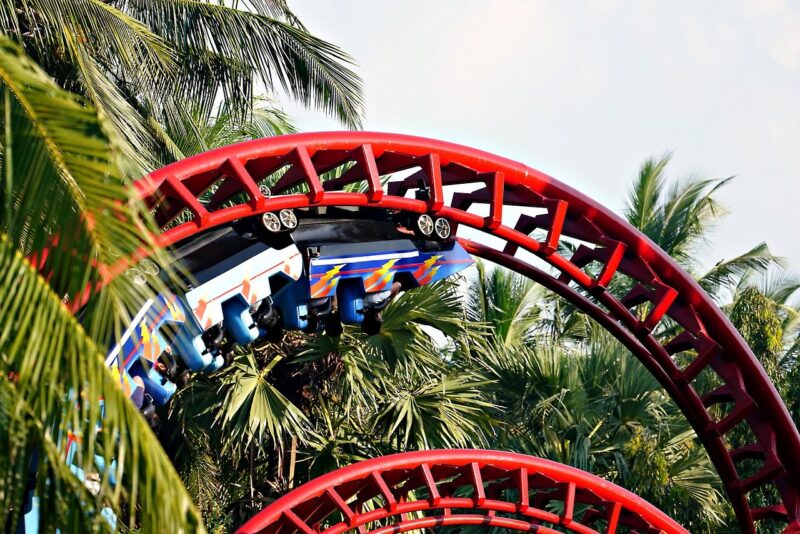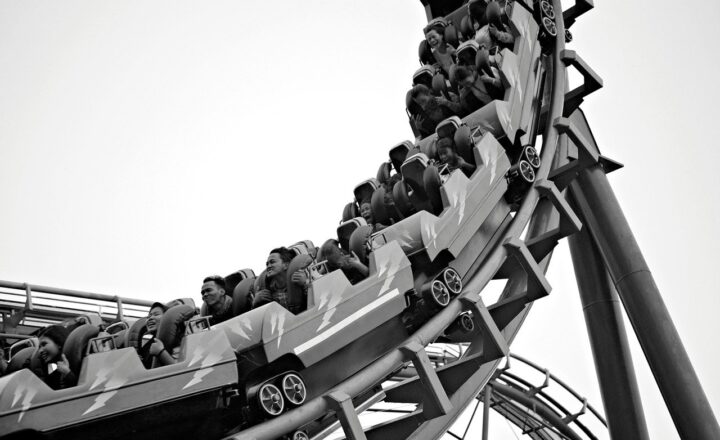The Bizarre History of the First Roller Coasters as a Russian Winter Pastime
November 15, 2024

Roller coasters are synonymous with amusement parks and thrill-seekers worldwide today. However, their origins are steeped in history, particularly tied to a unique winter pastime in Russia. This article delves deep into the fascinating journey of roller coasters, tracing back to their beginnings in the icy landscapes of Russia, and exploring how they transformed into the thrill rides we adore today.
1. The Icy Origins of Roller Coasters
The history of roller coasters can be linked back to the 17th century in Russia, where people sought entertainment during the harsh winters. The cold Russian winters prompted creativity in leisure activities, leading to the development of wooden slides, known as “kobenzh,” which were crafted from the available timber. People would slide down the icy slopes using sleds made of wood, and the thrill of descending at breakneck speeds became a beloved pastime.
These slides were not just simple structures but were often built 70 feet high, allowing for exhilarating drops that took the breath away. Although primitive compared to today’s engineered designs, these Russian slides laid the groundwork for future amusement rides.
2. The Architectural Marvel of Ice Slides
As their popularity grew, these ice slides evolved into more sophisticated structures. In the early 18th century, wealthy Russians began constructing elaborate ice slides, complete with decorative motifs and architectural embellishments. Some prominent nobles even commissioned their slides to reflect their status and wealth. One famous example is the ice slide at the Summer Garden in St. Petersburg, where ice blocks were used to create a stunning structure for the elite to enjoy.
The excitement surrounding these slides captured the attention of those in higher society and encouraged competition among the aristocracy to build more impressive and intricate designs. The feast of winter activities gained traction, transforming into a spectacle that attracted communal gatherings.
3. The Introduction of the First Wheeled Devices
By the 19th century, the thrill-seeking nature of these Russian winter pastimes began incorporating wheeled devices. The slide’s initial wooden sleds evolved into wheeled cars that utilized gravity rather than just the descent of ice and snow. This innovation marked a pivotal point leading towards the construction of modern roller coasters.
In the mid-1800s, traveling fairs started to emerge across Europe, including in Russia, bringing the spirit of amusement along with them. The desire for more sophisticated rides spread quickly, and the wheeled slide became a foundational template for roller coaster designs.
4. The Transition from Winter Slides to Summer Fun
As winter slides gained popularity, the notion of amusement parks began to take root. The very first roller coasters in the United States were inspired by these Russian ice slides, incorporating elevated tracks and open-air cars. The transition occurred as societal norms shifted, with people looking for year-round entertainment options rather than just seasonal activities.
The concept of amusement parks flourished in the late 19th century, featuring rides that could be enjoyed regardless of the season. Themes like contrasting the Russian winter’s exhilarating drop to the breezy summer air became a marketing strategy for amusement parks worldwide.
5. The Evolution of Roller Coasters in the Modern Age
The 20th century witnessed an explosion of roller coaster designs, moving far beyond the wooden structures that originated in Russia. Ingenious architects and engineers tapped into technological advancements, allowing for loops, twists, and greater heights, creating thrilling rides that defy gravity.
Today’s roller coasters are a marvel of engineering, attractiveness, and safety. From steel behemoths to wooden classics, these rides continue to capture the hearts and adrenaline of millions around the globe. However, it is essential to remember the origins of this exhilarating pastime, rooted in the icy traditions of 18th-century Russia.
6. The Cultural Impact of Roller Coasters
The modern roller coaster isn’t just a thrill ride; it represents the culmination of centuries of cultural evolution in leisure activities. In Russian history, those early winter slides were more than just entertainment; they were cultural expressions reflecting social dynamics, creativity, and community bonding.
The legacy of the Russian winter pastime can be seen in the global amusement industry today. Roller coasters have crossed borders, becoming a symbol of joy and adventure, echoing the thrill that began amidst the snowy landscapes of Russia.
Conclusion: From Snow to Screams
The bizarre transformation of roller coasters from Russian winter slides to the high-speed, gravity-defying marvels of today illustrates the power of human creativity and the innate desire for thrill and enjoyment. While modern roller coasters may bear little resemblance to their ancestors, they undoubtedly carry forward the spirit of excitement and communal joy that originated in the icy realms of Russia.
If you ever find yourself taking the plunge down a steep drop on a roller coaster, pause for a moment to appreciate the enduring legacy that traces back to those daring Russians sliding down icy slopes hundreds of years ago. This journey of roller coasters serves as a testament to evolving leisure activities that continue to thrill audiences across the globe, bridging cultures while delivering screams and laughter in equal measure.








